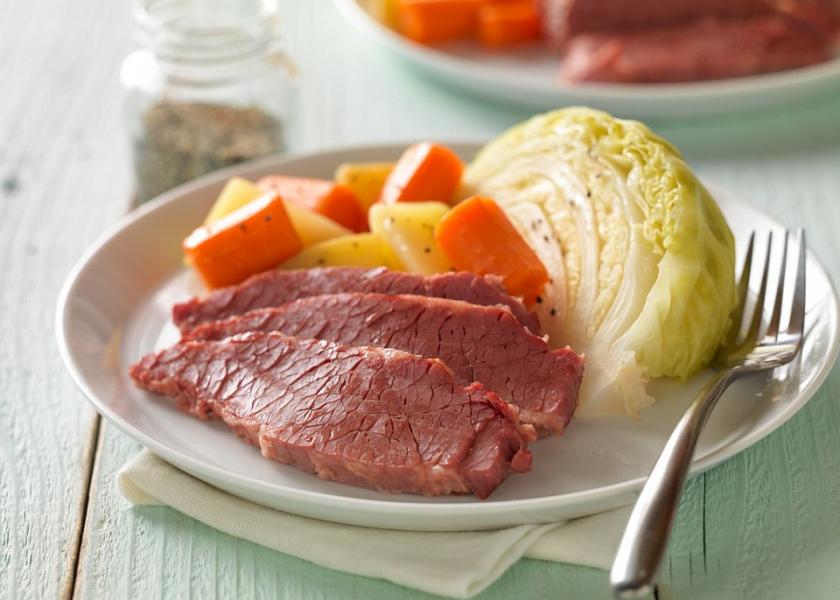How 'Corned Beef,' A St. Patrick's Day Favorite, Got Its Name

‘Tis the season for green shamrocks, leprechauns, and corned beef and cabbage! Though popular in the U.S., corned beef has a “not so popular” past in relation to its Irish holiday.
Cattle in Ireland during Gaelic times were considered a symbol of wealth and were used for strength in the fields, milk, and other dairy products and were only eaten as beef when they were too old to provide in the other capacities. Beef was eaten by kings in celebration and was typically salted in preservation.
From ancient times through present day, pork is the more common animal protein eaten in Ireland.
The British fueled the change as a beef-eating culture and outsourced to Ireland to meet demand. As British cattle producers grew upset with the large numbers of imported cattle, Britain enacted law that prohibited the import of live cattle to England.
This drastically flooded the Irish cattle market and lowered the cost of meat, which led to the creation of “corned beef” as a way to export beef to Britain.
The term “corned” beef derives from the size of the salt crystals that were used to cure the meat. At the time, Ireland had a lower salt tax than Britain and could import high quality salt. Irish corned beef was considered the best on the market.
Today, “corned beef” is no longer produced using corn kernel-sized salt but is brined in salt water. Coming from the brisket or the round of the animal, these tougher cuts of meat are best prepared using a low, moist heat.
Early Irish Americans celebrated their culture with this dish in the U.S. However, to this day, the tradition of corned beef and cabbage has not become popular in the Irish homeland. Lamb or bacon are eaten as the protein of choice for the holiday.
Whether you appreciate its distinct flavor or not, cattle producers can celebrate the fact that it’s beef on the menu eaten widely on St. Patrick’s Day in the U.S.







